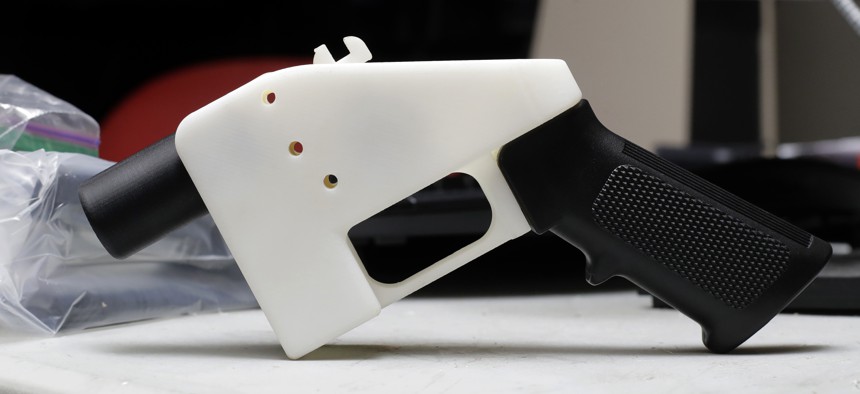Can Ammo Control Curb 3D-Guns?

A 3D-printed gun called the Liberator rests on a desk at Defense Distributed, Wednesday, Aug. 1, 2018, in Austin, Texas. AP Photo

Connecting state and local government leaders
Starting in July 2019, California will require retailers to conduct background checks on people buying ammunition.
Maybe Chris Rock was right.
New ammunition regulations in California could make it harder for people who shouldn’t have guns to use the ones they have—whether they’re begged, borrowed, or 3D-printed.
From July 2019, Proposition 63, a new law in California, will require retailers to conduct background checks on ammunition buyers at the point of purchase. In Sacramento, the state’s capital, where similar regulations are already in place, prospective buyers must provide government-issued identification and a thumbprint.
The proposition has gun-rights advocates shifting in their seats. Without ammunition, thousand-dollar weapons are little more than expensive paperweights. But it’s a promising move for those concerned about the rise of 3D-printed guns, which are increasingly easy to access via either illegal download links or “legal” mailed flash drives.
At least for now, 3D-printed guns are fairly rudimentary, not to mention expensive. Most hold no more than a couple of bullets, fall apart almost immediately, and pose as great a risk to the user as their target. But experts say the technology is getting better. Jody Lynée Madeira, a law professor at Indiana University, warned that greater access to so-called “ghost guns” (named for their relative difficulty to track or pick them up on metal detectors) would encourage people to collaborate and innovate, even if current 3D printed guns weren’t especially effective. ”You don’t want to be alarmist, but you also want to keep these things on the radar,” she told Quartz.
But 3D printed ammunition is much further away, which is why this regulation might be an effective measure to make 3D-printed guns less of a longterm risk. As engineer and firearms enthusiast John Carnes writes for conservative news outlet The Federalist: “By definition, polymers, or even metal, cannot be 3D printed into gun powder. The components of gun powder are easily subject to regulations, and 3D printers don’t produce granulated powder.”
At the moment, 3D printed ammunition is either little more than plastic pellets, or high-tech workarounds to retrofit standard ammunition for 3D printed guns, although these are expensive efforts that tend to go well beyond what most standard 3D-printers can produce. In Russia, the government-sponsored Foundation for Advanced Studies has produced bullets which are allegedly equivalent to standard cartridges (link in Russian)—but these require eye-wateringly expensive laser-fusion technology thousands of timesas expensive as at-home printers.
It may not be specifically why they were introduced, but ID requirements such as California’s have the impact to change the future of homemade 3D-printed guns forever if similar regulations are adopted in other states and countries. As former US senator Daniel Patrick Moynihan reminded the Senate in 1993, in a failed attempt to raise ammunition taxes by 10,000%: “Guns don’t kill people. Bullets do.”
Natasha Frost is a reporter for Quartz, where this article was originally published.

NEXT STORY: Lessons from Floods Past Show Challenges With Hurricane Florence




